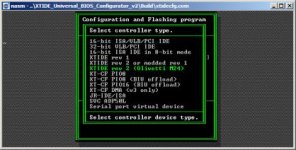This smacks of CF IDE adapter compatibility to me, grab one of these and retest - I've had 100% success with these adapters used with an IDE extension cable.
It does to me in a way, It's pot luck with those cheap chinese adapters, They either don't work or work and die after some use, The one you linked to, I've thrown more of those in the bin than any other but like i said it's pot luck, I've found the most reliable of the cheapo adapters are the ones that PePe-fr is using, I have a few of those and had no problems, I've found the adapters from E-Engines are pretty good, I have another i've had for several years but can't think of the manufaturer but they were a tad more expensive.

